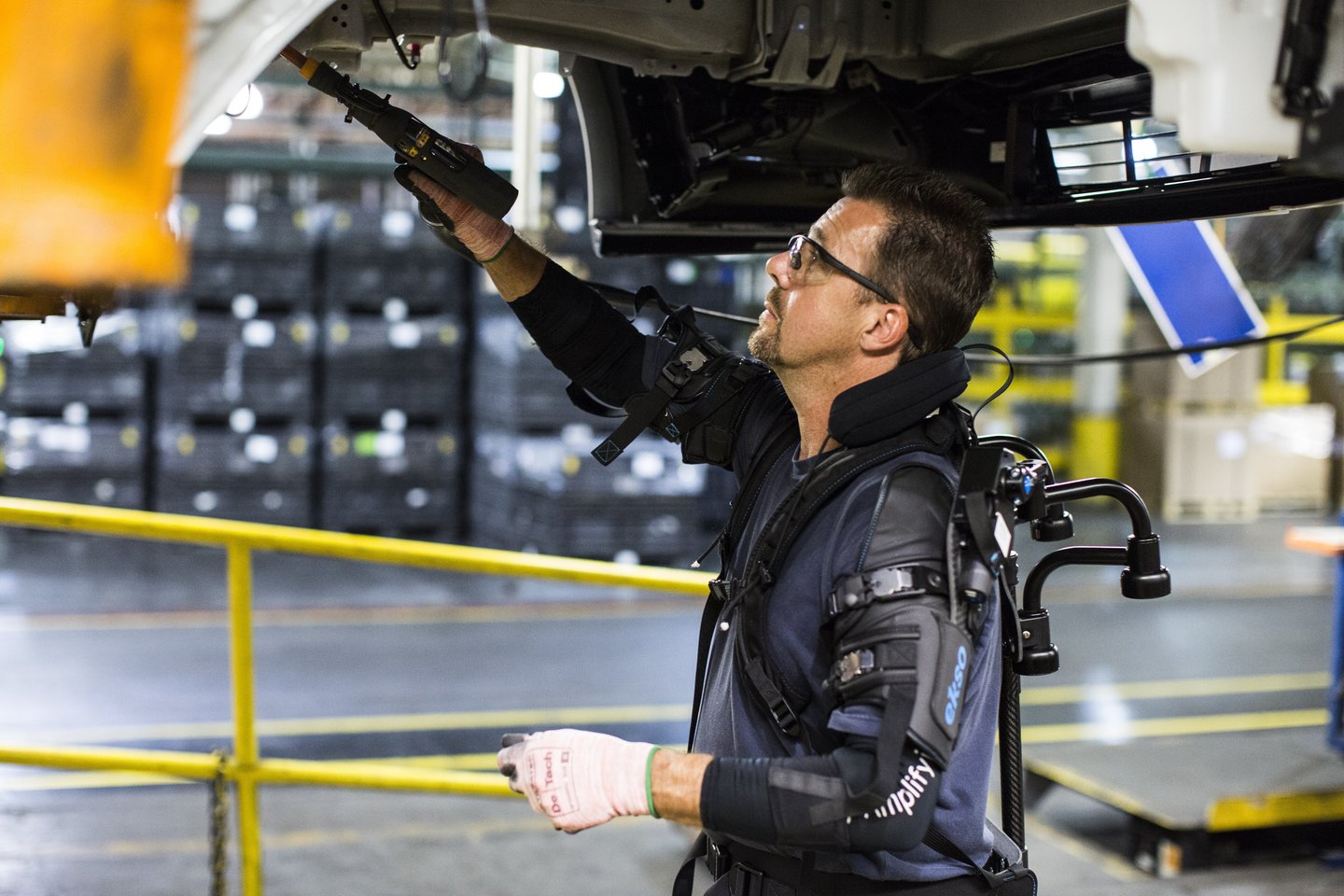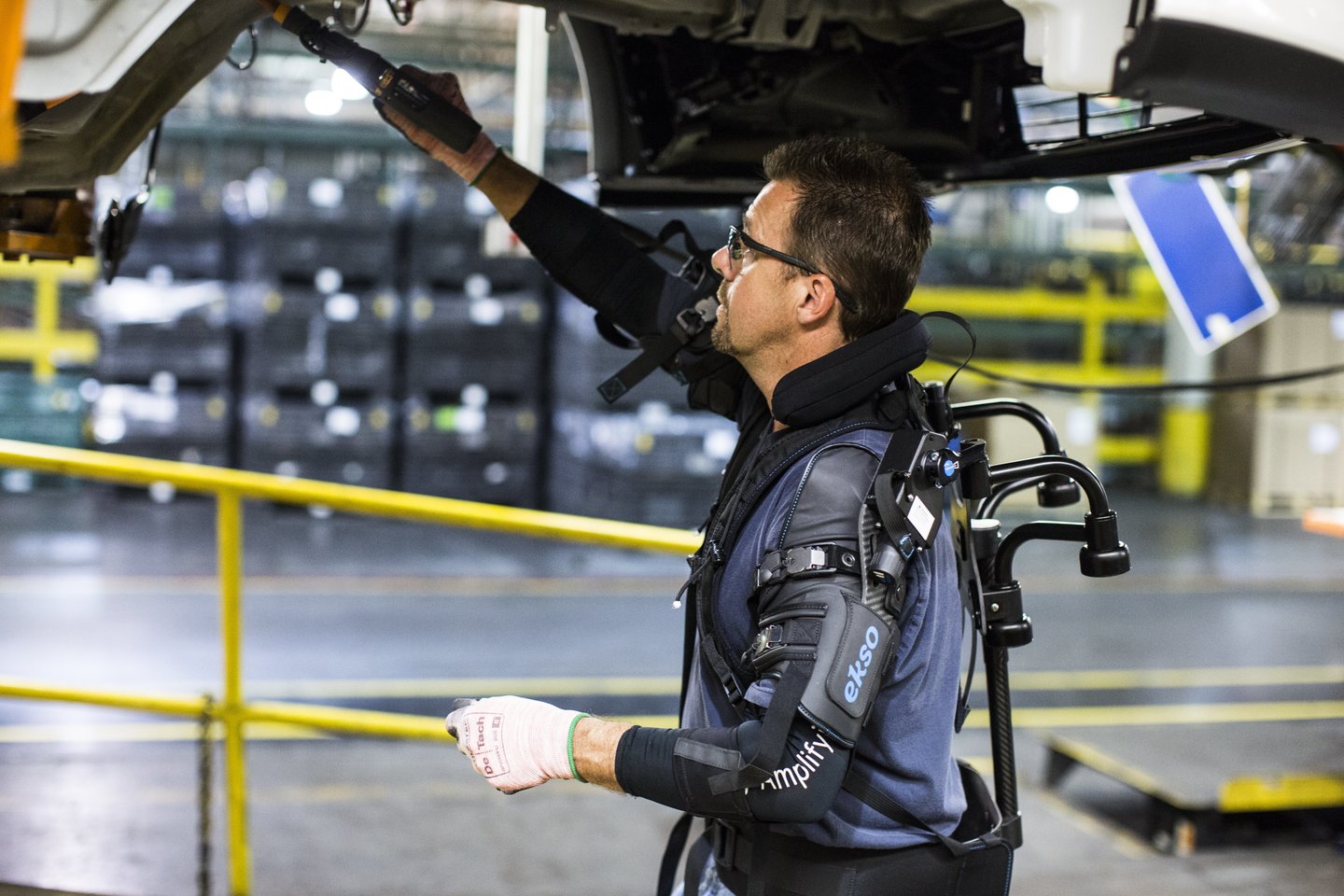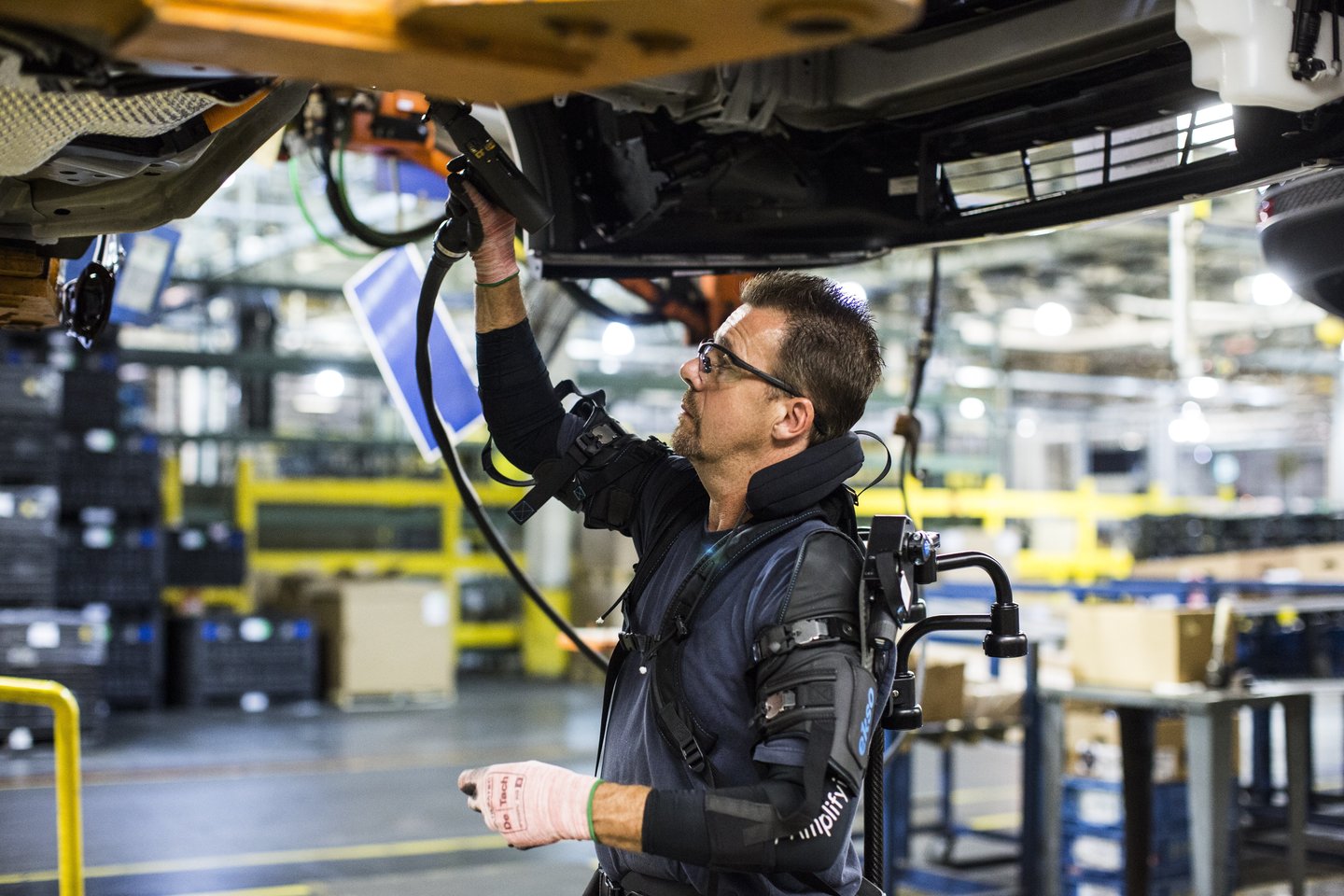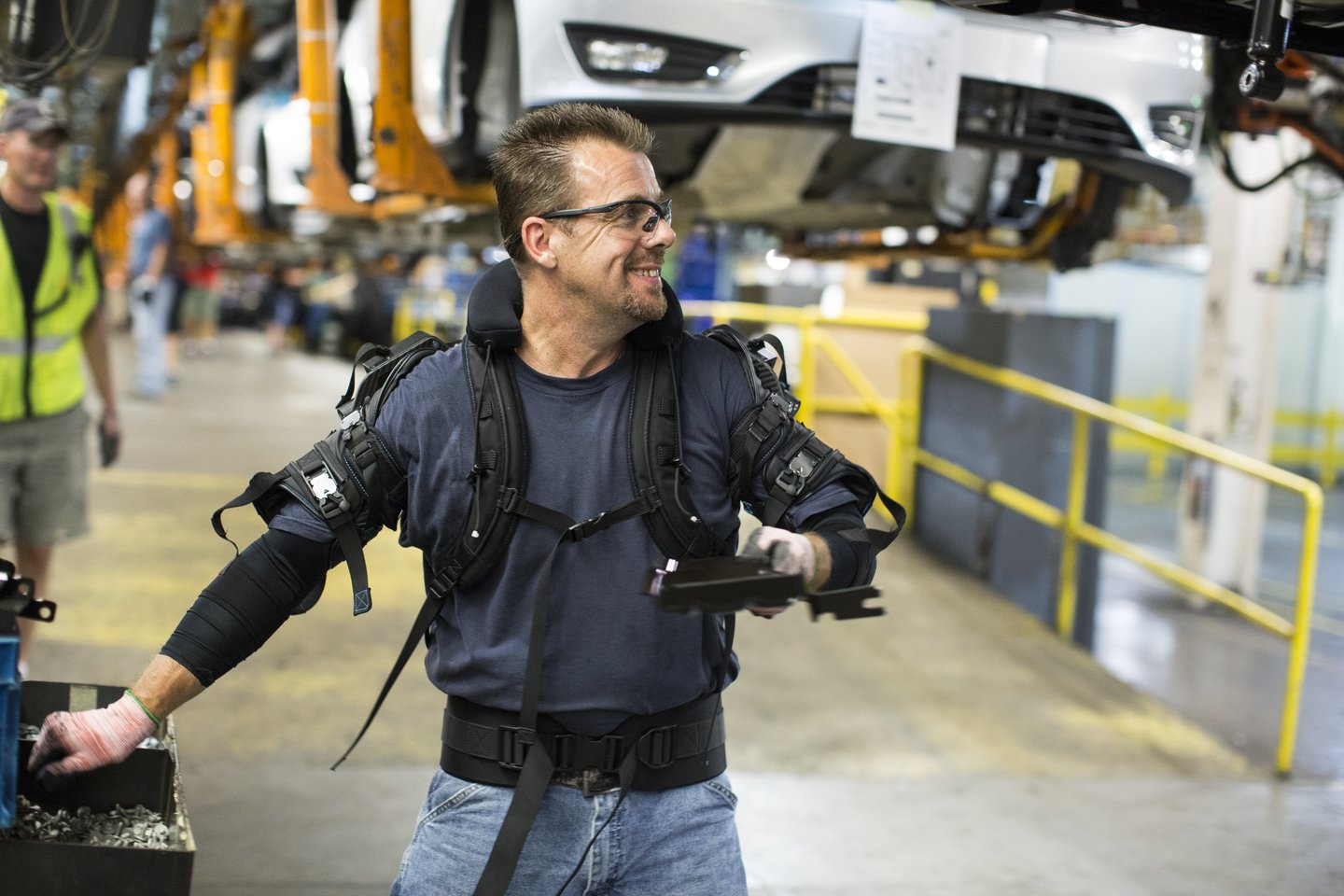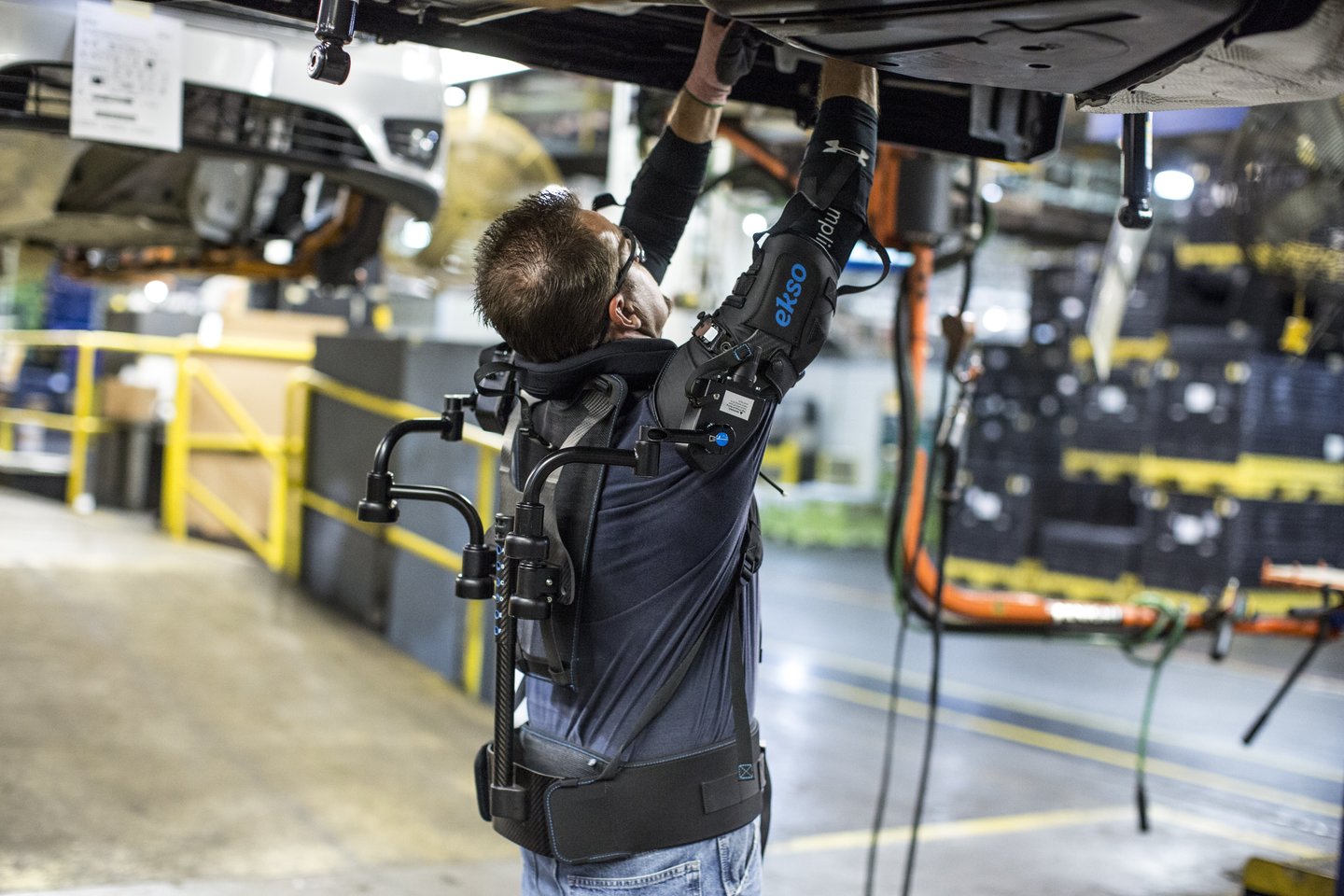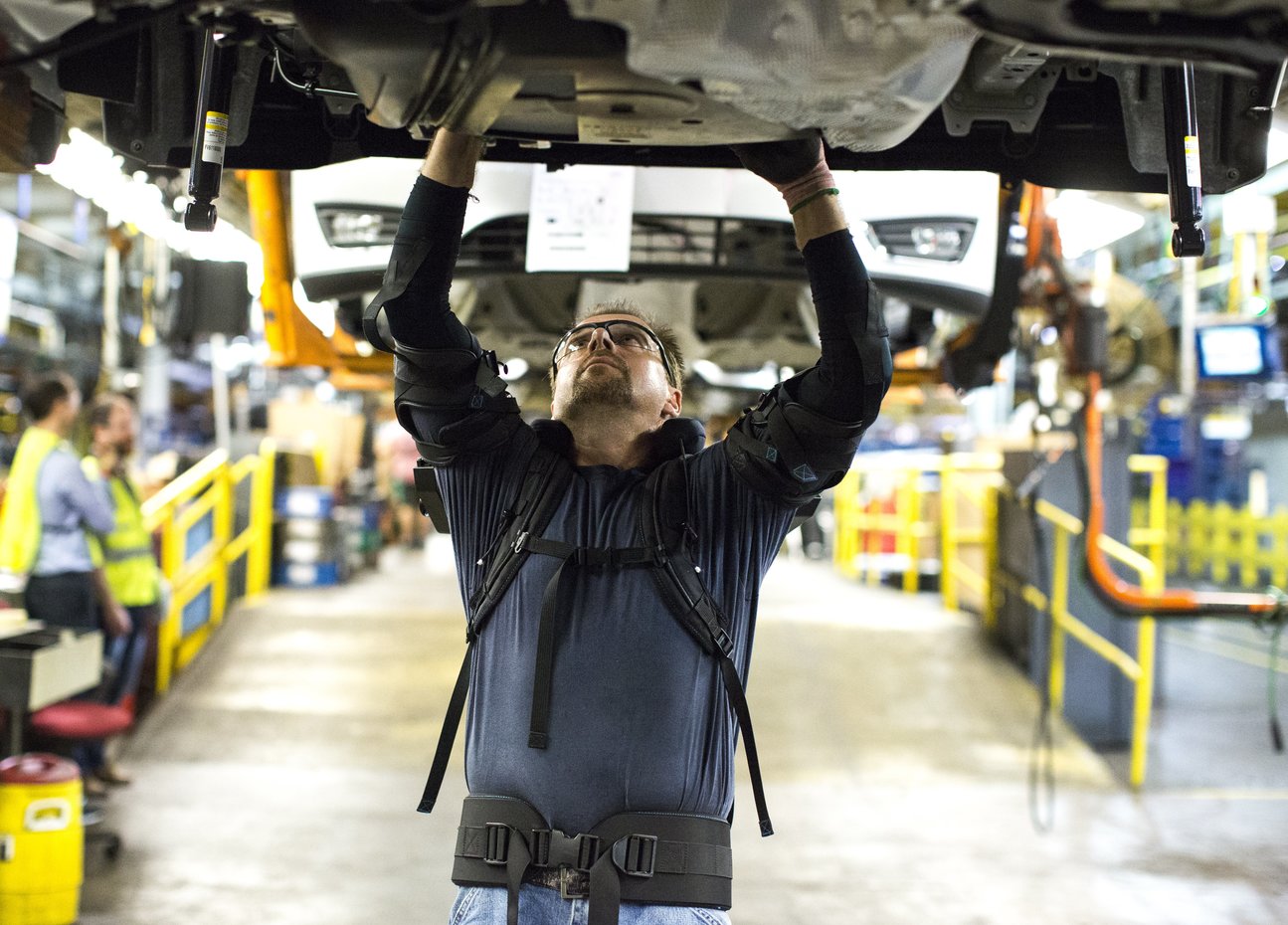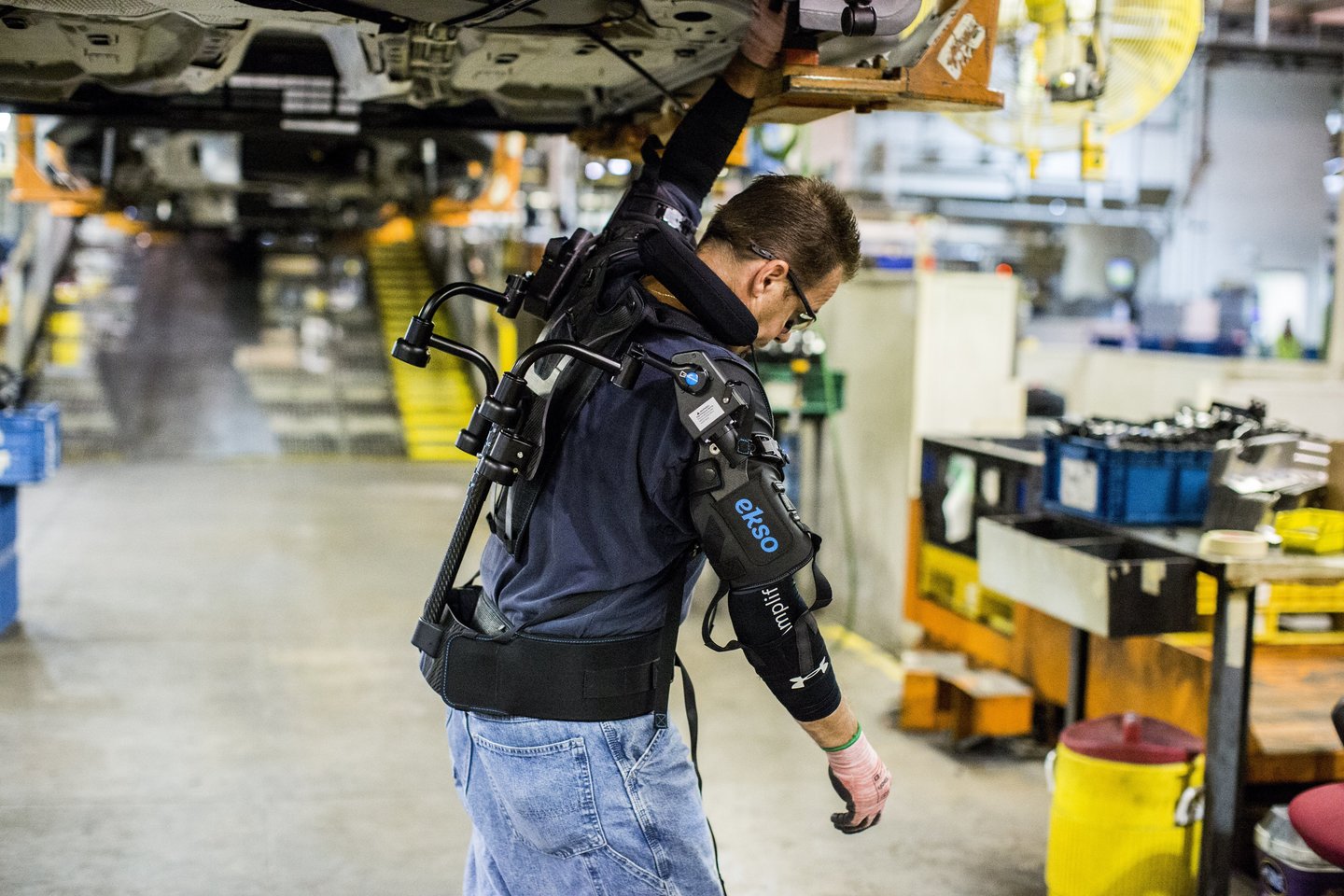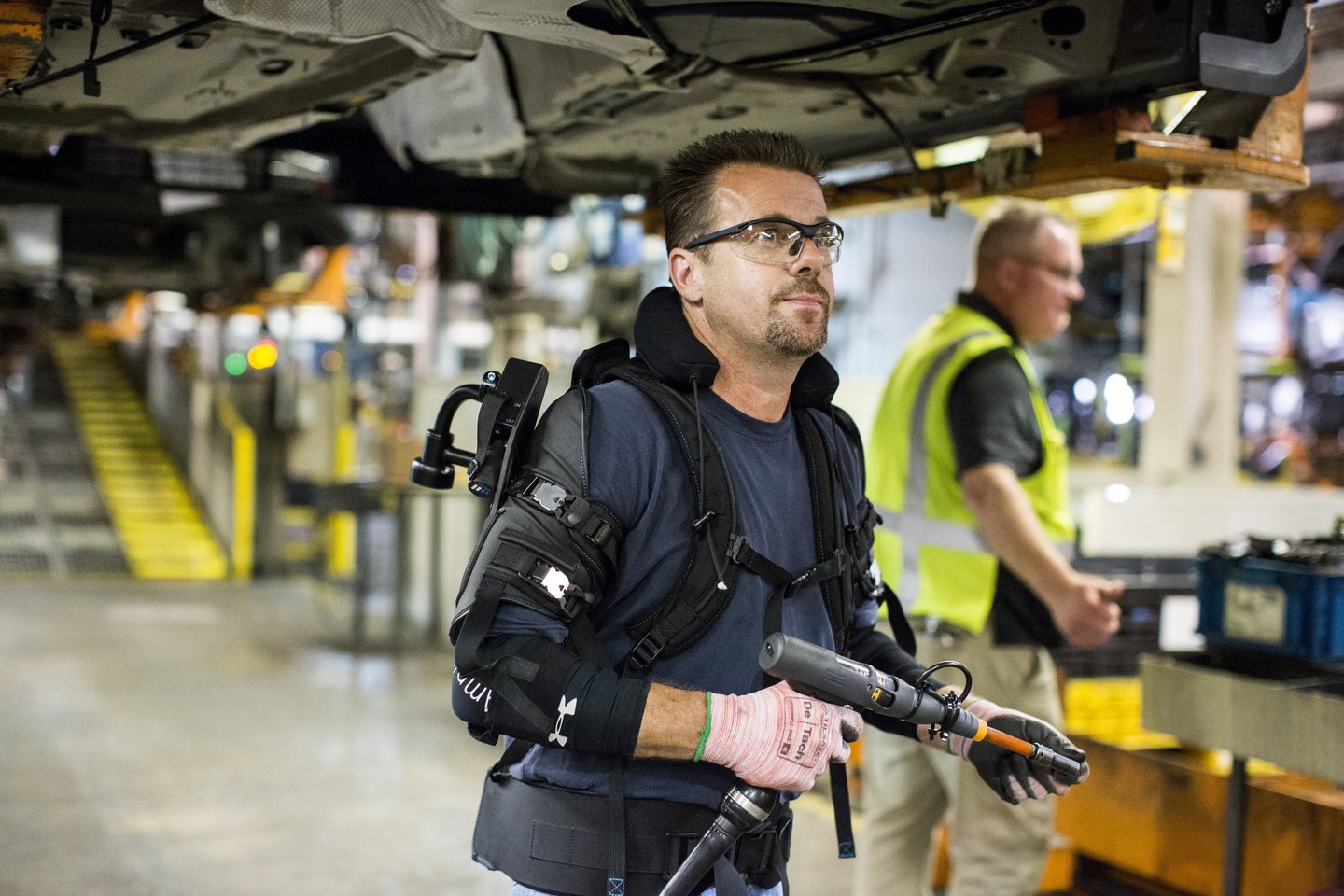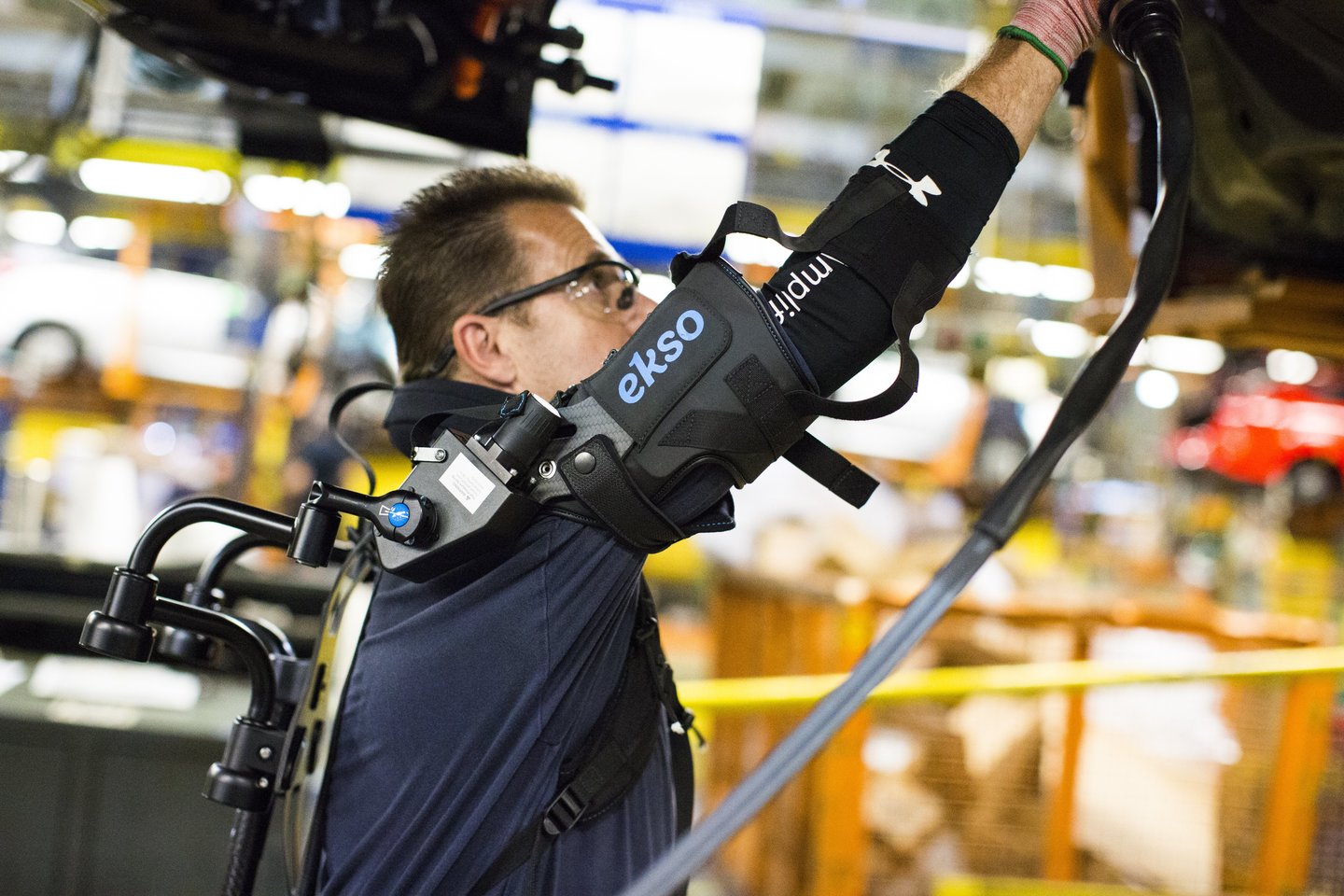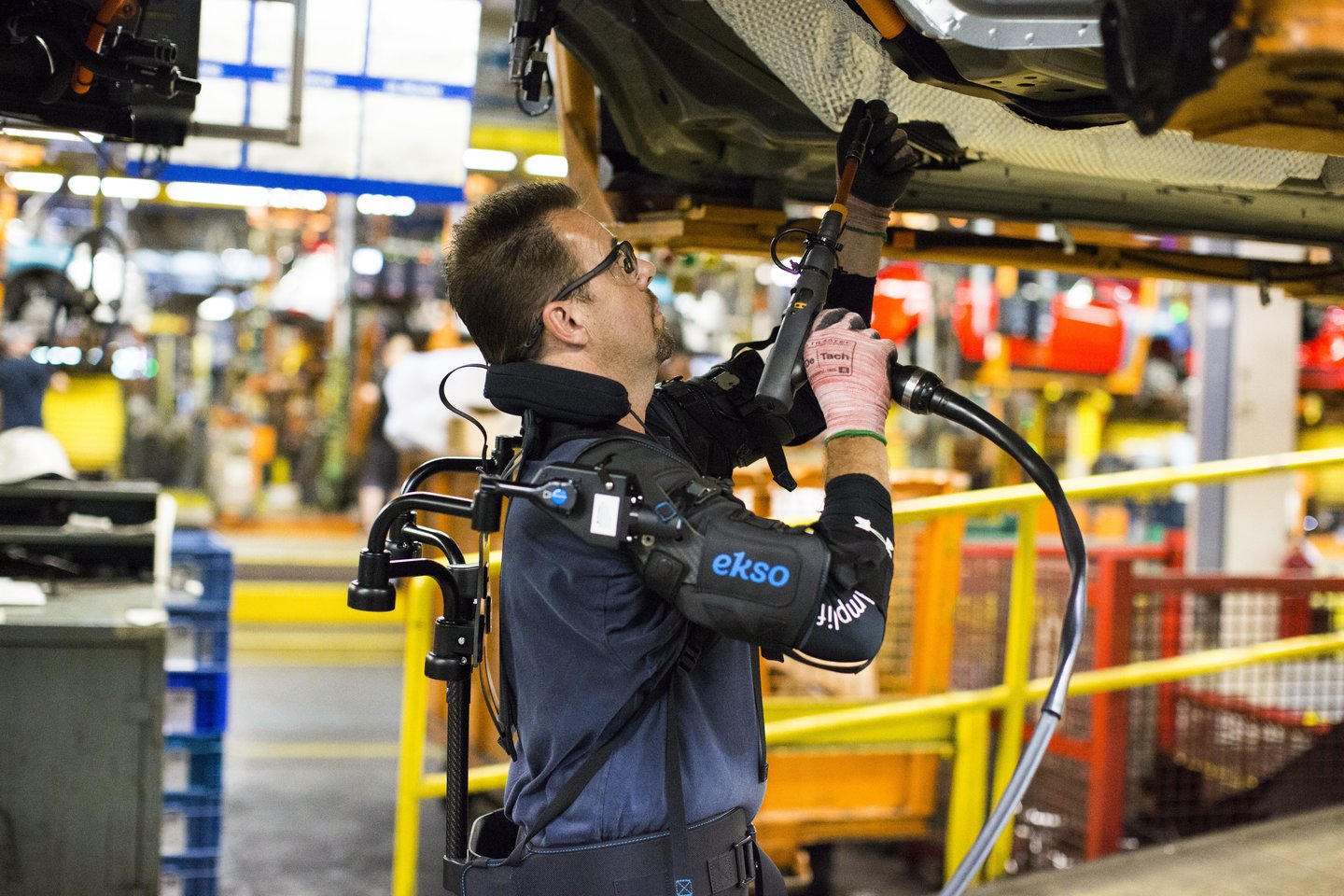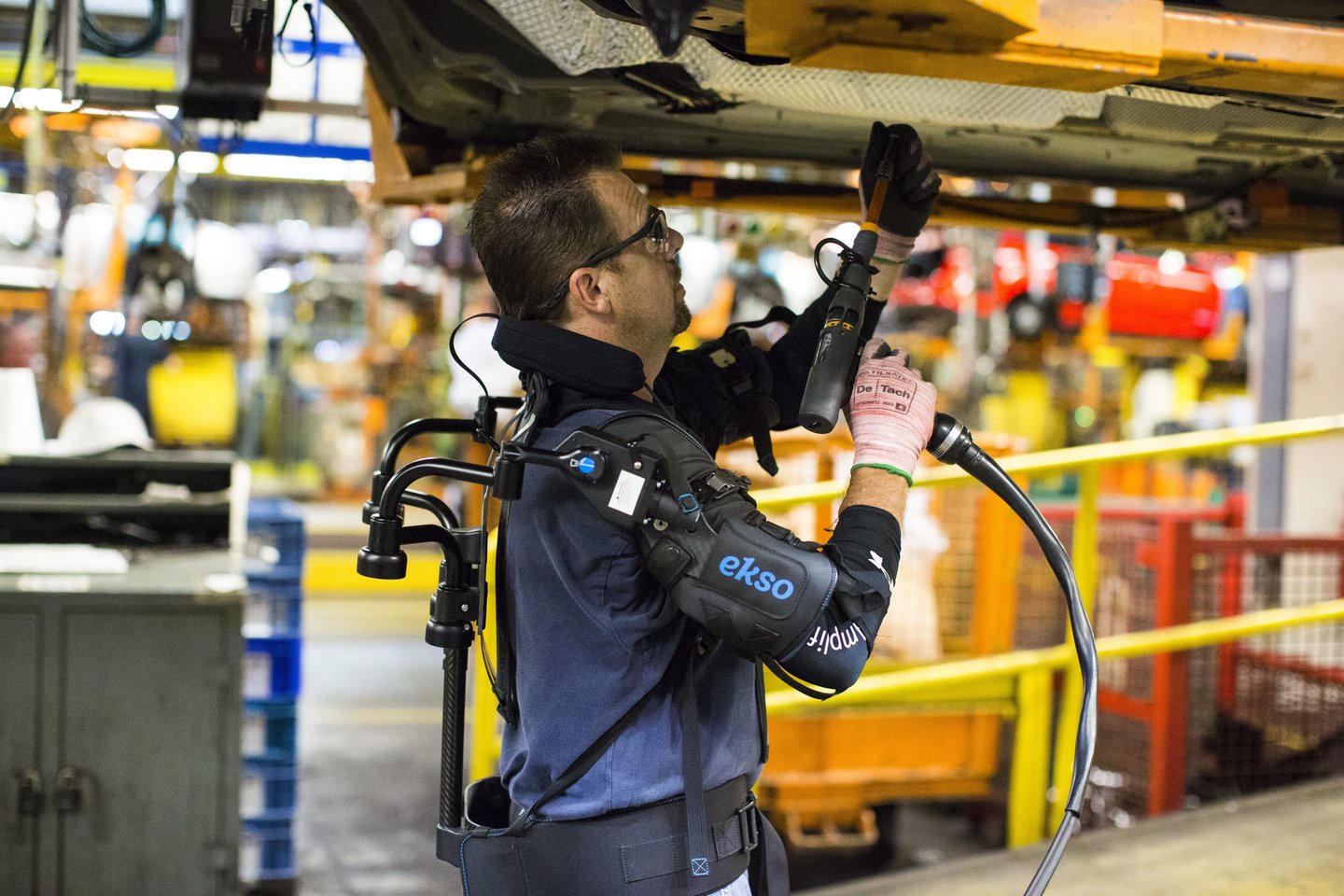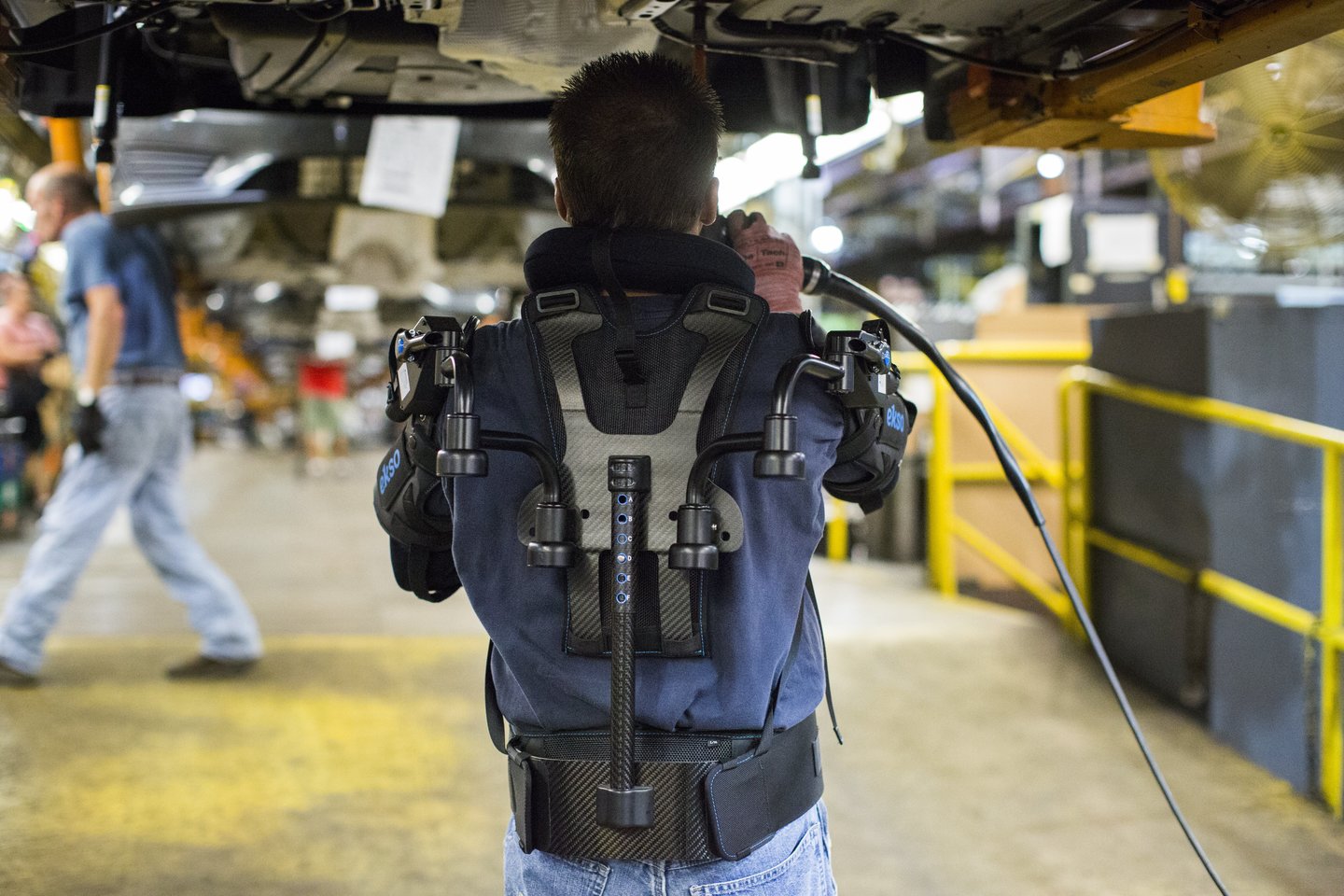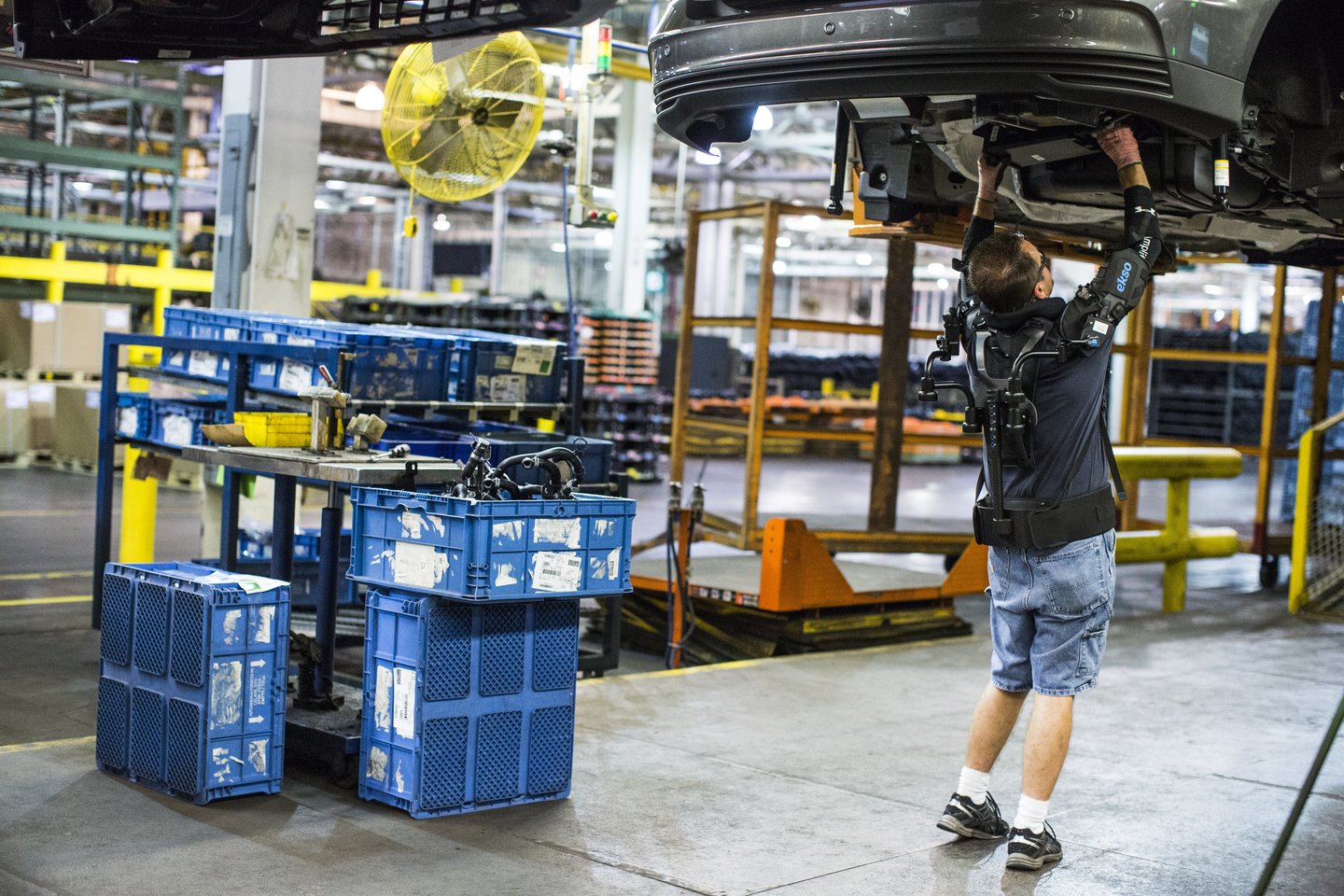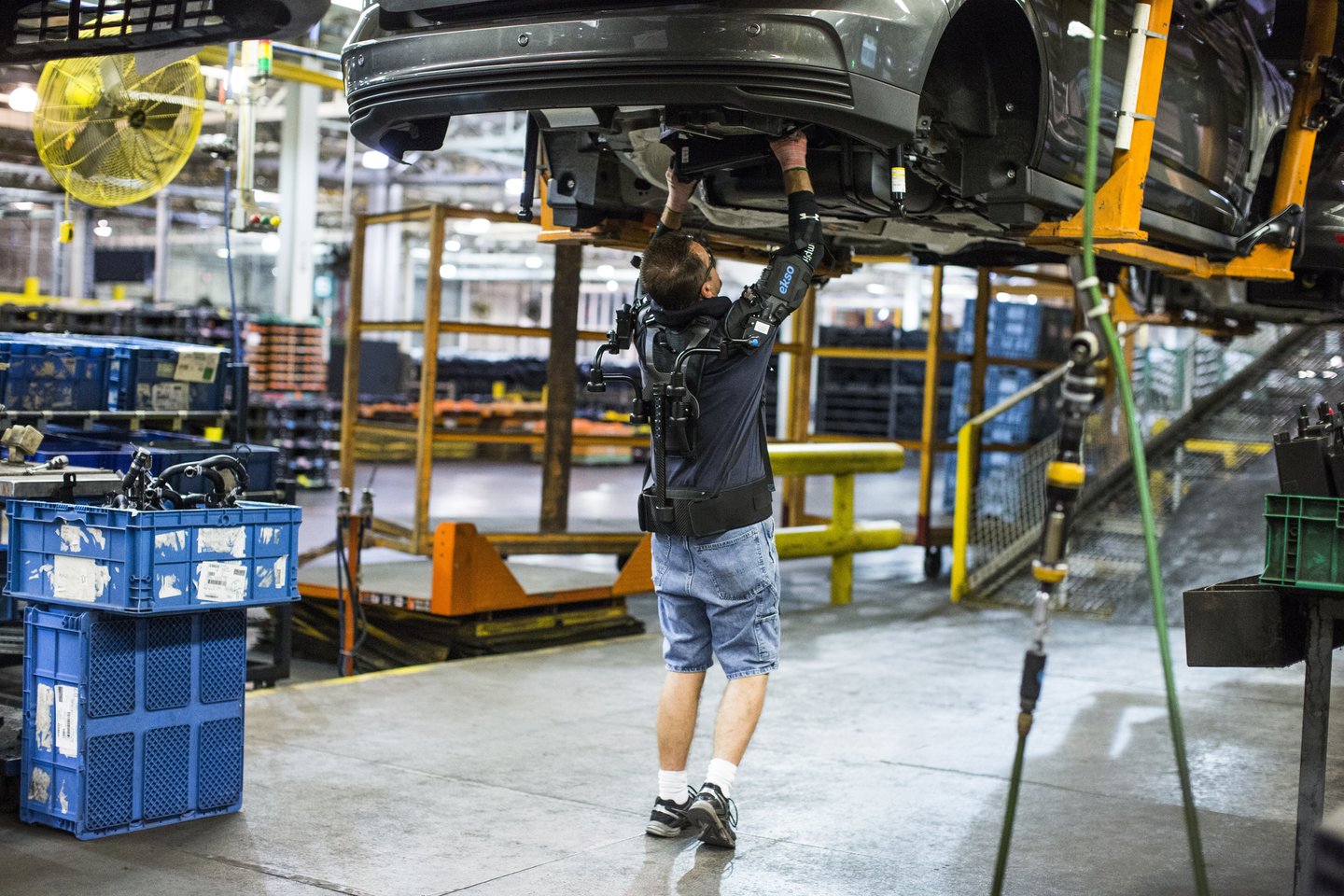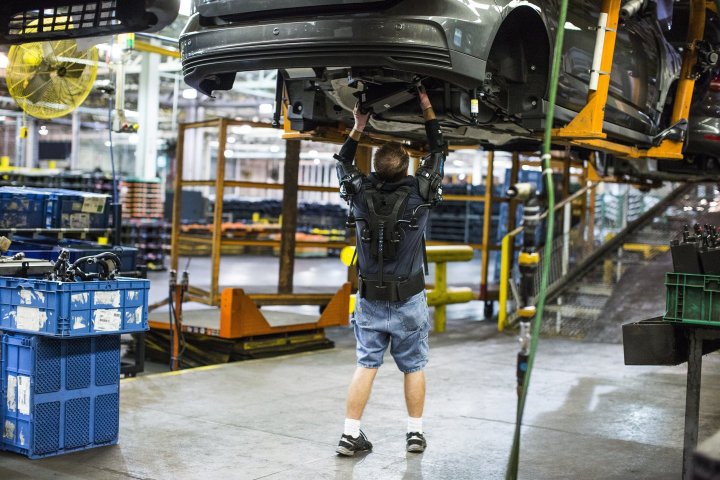
Instead of a fully automated machine, the EksoVest is an assistive upper-body exoskeleton that helps assembly line workers do their jobs more efficiently. It sprung from a partnership between Ford and Ekso Bionics — a company that has worked with BMW in the past — and is aimed at reducing the chance of fatigue and injury at work.
Designed specifically to help with overhead tasks, the lightweight wearable elevates and supports a worker’s arms and can be used by people between 5 feet and 6 foot 4 inches tall. The amount of assistance ranges from 5 to 15 pounds per arm, and while that won’t exactly help you in a scuffle with The Hulk, it will certainly lessen the physical toll of raising your arms 1 million times a year, which Ford estimates many of its workers do.
“Collaboratively working with Ford enabled us to test and refine early prototypes of the EksoVest based on insights directly from their production line workers,” said Russ Angold, co-founder of Ekso Bionics. “The end result is a wearable tool that reduces the strain on a worker’s body, reducing the likelihood of injury, and helping them feel better at the end of the day – increasing both productivity and morale.”
The EksoVest is currently part of a pilot program at two of Ford’s U.S. plants, but the brand plans to expand the program into Europe and South America soon. It’s not the only company experimenting with sci-fi-inspired tech. In 2016, Hyundai detailed a heavy-duty exoskeleton that allows its wearer to lift hundreds of pounds, and earlier this year, Roam Robotics debuted a featherweight exoskeleton made from foam, plastics, and fabrics that helps regular people deal with heavy lifting. Moving day, you’ve finally met your match.
